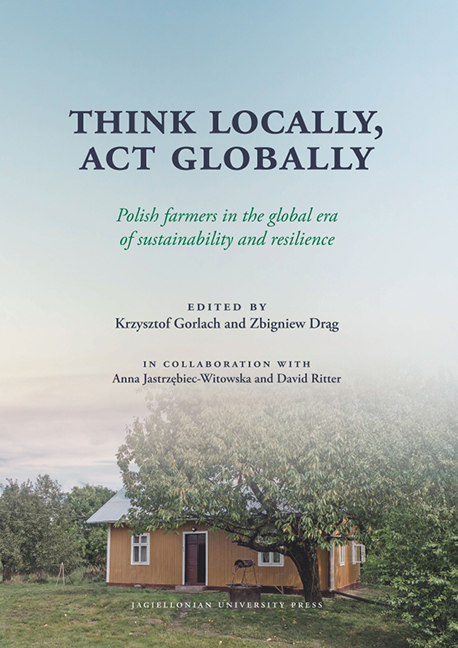Book contents
- Frontmatter
- Contents
- Family Farming: A foreword
- An Introductory Letter from the First Editor: Where the horses, cows, and even cats had their own names
- Part One Theoretical and Methodological Considerations
- Part Two Changes in the Post-Communist Transformation
- Part Three Diversification of Farmers’ Strategies
- Part Four Some Independent Studies
- Conclusion: Some Final Remarks from the First Editor
- Afterword: Renewing a Sociology of Agriculture
- Biograms
Chapter Five - Large Farms and Big Farmers in Poland in 2017
Published online by Cambridge University Press: 16 July 2022
- Frontmatter
- Contents
- Family Farming: A foreword
- An Introductory Letter from the First Editor: Where the horses, cows, and even cats had their own names
- Part One Theoretical and Methodological Considerations
- Part Two Changes in the Post-Communist Transformation
- Part Three Diversification of Farmers’ Strategies
- Part Four Some Independent Studies
- Conclusion: Some Final Remarks from the First Editor
- Afterword: Renewing a Sociology of Agriculture
- Biograms
Summary
Introductory Remarks
The current chapter is devoted to analysis of so-called large farms. This matter is one of the most crucial aspects of the reflection in this publication and of equal importance with the analyses of various aspects of farms. In the rural sociology literature, large farms are usually juxtaposed with small farms, the act of which may have different purposes depending on the contexts and the specifics of the research. In the historical perspective it has been presented that large farms are usually under the ownership of dominant class representatives (aristocrats, magnates, landowners, etc.) unlike small peasant farms. Nowadays, the juxtaposition takes the form of relations between large corporate farms and relatively small family farms. Somewhat differently, in the analysis of modernization processes in contemporary societies, numerous authors notice the increasing average farm size, which goes together with the mechanization of farm work, where physical labor is being eliminated as large farms make it possible to conduct agricultural activities with modern machinery in a larger space. This fosters the use of agricultural machines and amps up the production scale. Such a reflection consequently leads to the concept of the economy of effect, which points to larger production volume and larger farm size, which together lower production costs per product unit and lead to greater profitability.
The issue of farm size reveals the relative nature of what can be recognized as a “large,” “medium,” or “small” farm. Common knowledge indicates that a 20–30 ha farm can be recognized in Poland as a large farm, while in the United States it would be rather small, as large farms there encompass hundreds of hectares. The average size of a farm in any given country can be a good indicator of the relativity of the terms “small farm” and “large farm.” The data on average farm sizes in the European Union can provide some interesting information in this regard (Table 5.1.1).
By devoting one chapter of the monograph to an examination of large farms in Poland, the authors want to show how owning and operating a large piece of land might influence other characteristics of these farms, as well as the strategies and activities of those engaged in operating them.
- Type
- Chapter
- Information
- Think Locally, Act GloballyPolish farmers in the global era of sustainability and resilience, pp. 251 - 294Publisher: Jagiellonian University PressPrint publication year: 2021



